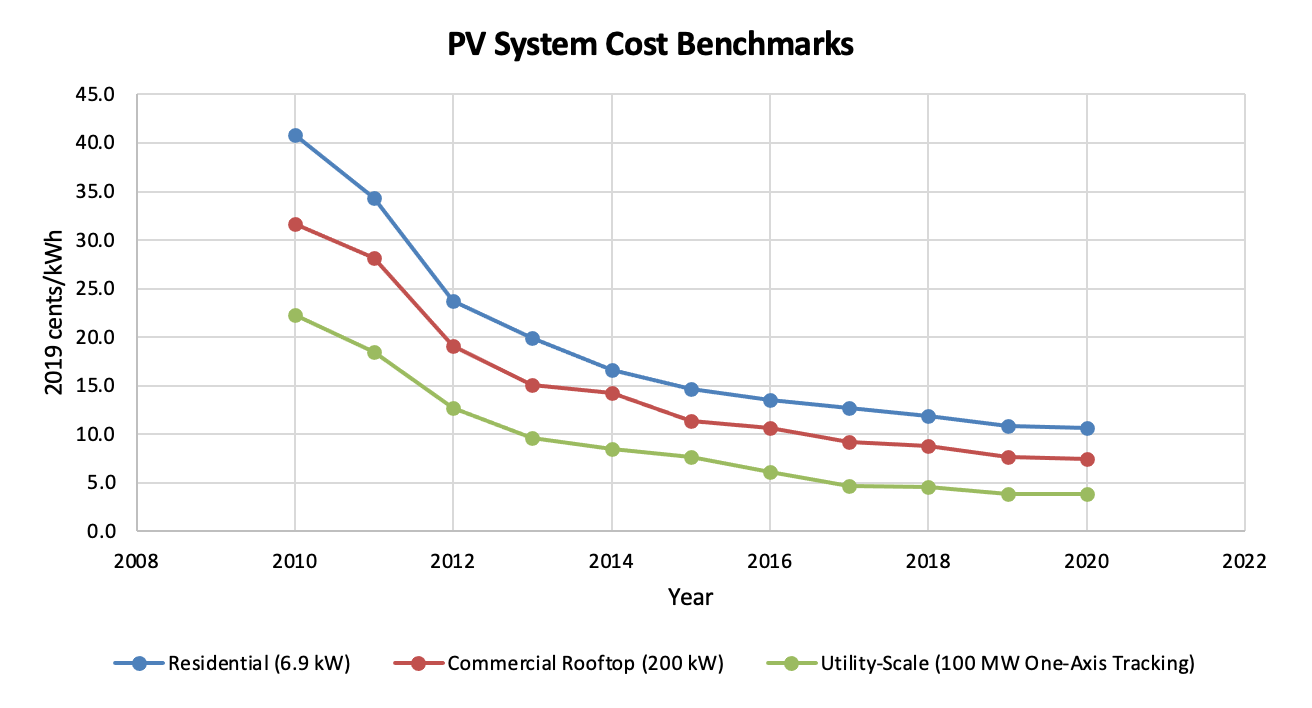What Cheap Solar Can Teach Us About the Energy Transition
Takeaways from Technology for a Clean Energy Transition
By Colin Lanier
June 1, 2022
Saoradh Enterprise Partners (SEP) attended Technology for a Clean Energy Transition, a webinar hosted by Columbia University's SIPA Center on Global Energy Policy. The panel discussed the importance of technology in the energy transition. The two panelists were:
Dr. Jessika Trancik, Professor at MIT's Institute for Data, Systems, and Society.
Dr. Geoffrey M. Heal, Professor of Economics at Columbia Business School.
Trancik and Heal discussed the strengths and weaknesses of technologies such as batteries, hydrogen energy, electrification, and nuclear energy. Dr. Trancik stressed the importance of "soft costs" in these technologies, such as logistics, construction, and distribution. She has found that the soft costs are often the largest and most important to understand.
Reflecting on her work, Dr. Trancik discussed the success story of solar energy prices. Falling prices have led to greater access among residential, commercial, and utility-scale users and made solar competitive in the energy market. The factors that made solar energy competitive are important to understand if other renewable energy sources are to follow a similar path. This price drop means solar is now the cheapest energy source, making the switch to renewable energy much more cost-effective. Figure 1 shows that solar costs dropped by an average of 78% between 2010 and 2020.
Figure 1: Data from the National Renewable Energy Laboratory (NREL).
In her paper published in Energy Policy, led by Goksin Kavlak, Dr. Trancik developed a mathematical model to quantify the cause of the immense drop in price.
The most significant low-level mechanisms were increased conversion efficiency, the decreased price of silicon and other materials, and less silicon needed to construct PV modules. The main changes contributing to the price decrease were:
Efficiency – 23% of the decrease.
Cost of silicon (Si) – 16% of the decrease.
Cost of non-Si materials – 21% of the decrease.
Other factors influencing the price are shown below in descending order.
Figure 2: Low-level change mechanisms. Kavlak et al., 2018.
New technological developments in solar take advantage of the increased efficiency and availability of materials. Metal halide perovskite solar cells (PSCs) are becoming one of the most efficient and low-cost solutions, absorbing 80.5% of the potential solar energy. There are issues with charge carriers, but research at MIT and the University of Colorado Boulder seeks to make this technology competitive.
The high-level mechanisms drive the low-level mechanisms (efficiency, cost, yield, etc.). These mechanisms consisted of government-funded and private research and development efforts, learning-by-doing, and economies of scale.
Research and development (R&D) is the development of new products and innovations undergone by a company. The authors categorized R&D as improvements to module efficiency, wafer area, and silicon usage.
Learning by doing (LBD) is the improvement of a process through a repeated routine. The authors categorized LBD as improvements brought about by repeated manufacturing activity.
Economies of scale (EOS) increases output while decreasing the average cost per item. The authors identified EOS as a result of increases in the module manufacturing plant scale and the volume of material purchases.
R&D, EOS, and LBD were attributed to the change in the low-level variables and quantified in Figure 3.
Figure 3: High-level change mechanisms. Kavlak et al., 2018.
Dr. Trancik discovered from this research that the high-level mechanisms were all catalyzed by market expansion policies, such as feed-in-tariffs (FITs), renewable portfolio standards (RPS), and net metering tariffs.
Feed-in-tariffs (FITs) guarantee that customers will receive a set price from their utility for all the electricity they generate and provide to the grid from renewable sources.
Renewable portfolio standards (RPS) require or encourage electricity producers to supply a certain minimum share of their electricity from designated renewable resources.
Net metering tariffs enable customers to use the electricity they generate from renewable energy sources to offset their electricity use from the grid.
Technology is an essential part of the transition to a more sustainable future. A better understanding of high-level and low-level mechanisms, such as policy and module efficiency, allows cleantech investors to make informed decisions. Technology for a Clean Energy Transition stressed the importance of decision-making using data-driven results, such as those found in the study. As research continues to surface, it is essential to draw connections and see how we can adopt other technologies like wind, hydrogen, and nuclear through policy and investment. SEP hopes these other energy sources can follow a similar path and realize more savings as they develop.
Renewable energy is one of SEP's nine cleantech sectors and is of particular interest as the energy transition continues.
Colin Lanier was a spring semester intern at SEP. He recently graduated from the University of Colorado Boulder with a degree in Environmental Studies.




